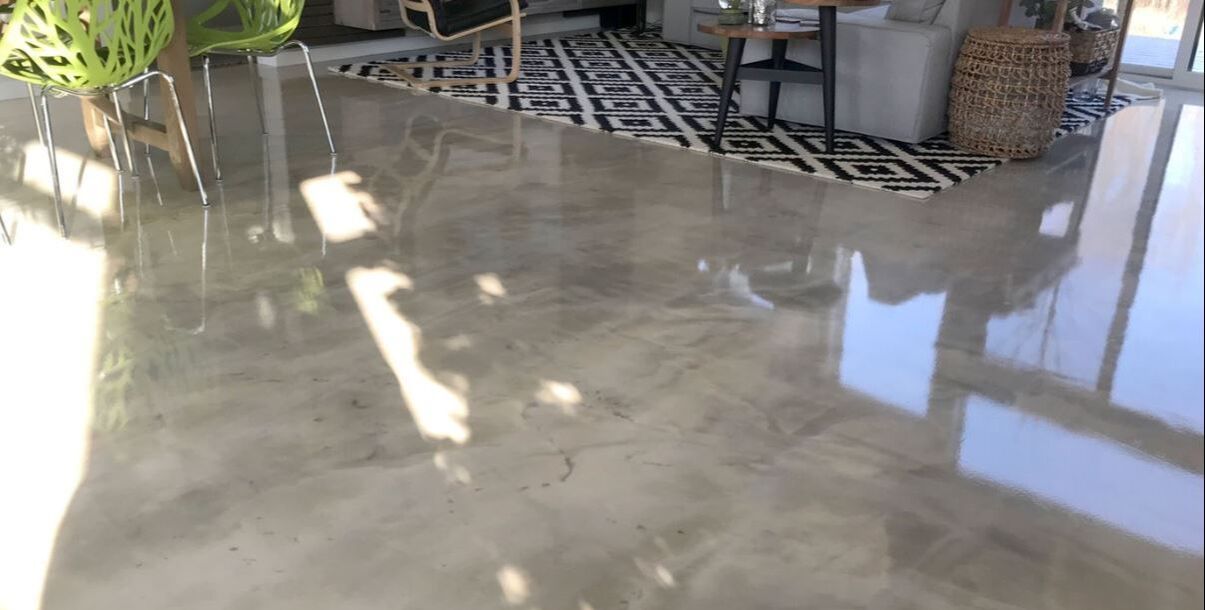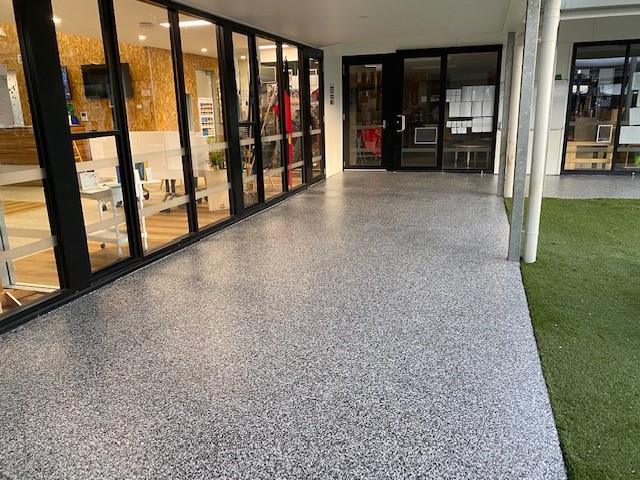Ultimate Overview to Putting Up Durable Epoxy Floors in Residential Spaces
When it comes to transforming domestic rooms with durable epoxy floorings, a systematic technique is vital. There's one facet usually forgot that can dramatically influence the durability and high quality of the epoxy floor.
Picking the Right Epoxy Floor Covering System
Picking the proper epoxy flooring system is a vital action in making sure durability and performance in household rooms. Epoxy floor covering offers toughness, very easy upkeep, and visual appeal, making it a prominent option for domestic applications. When picking an epoxy system, factors such as the kind of epoxy, level of longevity required, design choices, and budget constraints have to be taken into consideration.
There are various types of epoxy floor covering systems readily available, including water-based epoxy, solvent-based epoxy, and 100% strong epoxy. 100% strong epoxy is the most durable choice, perfect for high-traffic locations in domestic rooms.

Preparing Your Residential Room
When considering the installation of sturdy epoxy floorings in residential rooms, ample prep work of the area is essential to making sure a resilient and effective application. The very first action in preparing your domestic space for epoxy flooring is to thoroughly clean up the surface.
Following, it is vital to fix any cracks, openings, or blemishes in the flooring. These should be loaded and leveled to create a smooth and also surface for the epoxy finish to be used. In addition, look for dampness concerns as extreme dampness can cause the epoxy to bubble or peel. Address any kind of wetness troubles before proceeding with the installation.
Last but not least, make certain proper ventilation in the area during the installation procedure to allow the epoxy fumes to dissipate. Sufficient prep work of the house establishes the structure for a successful epoxy floor covering application.
Using Epoxy Coating
To begin the process of applying epoxy finish, completely blend the epoxy material and hardener according to the producer's instructions. It is important to comply why not try this out with the advised blending proportions precisely to guarantee the epoxy treatments effectively and achieves optimum toughness. As soon as the epoxy elements are mixed, put the combination onto the prepared flooring surface in a bow pattern.
Utilizing a roller with a medium-nap cover, spread out the epoxy equally over the flooring, working in manageable areas to avoid the epoxy from drying too rapidly. Make sure to back-roll the applied epoxy to eliminate any puddles or unequal locations, making sure a constant and smooth coating.

Allow the epoxy finish to heal according to the producer's directions before waging any kind of more steps to make certain a resilient and durable finish.
Guaranteeing Proper Treating and Drying Out
Reliable curing and drying procedures are vital to achieve the desired toughness and durability of epoxy floorings in property rooms. Appropriate treating involves offering the epoxy layer enough time to set and bond entirely to the substratum. This process commonly takes around 24 to 72 hours, depending upon the details product used and ecological problems. Throughout this period, it is crucial to limit foot web traffic and stay clear of positioning hefty objects on the flooring to avoid any damages or flaws.
Correct air flow helps the epoxy covering to heal consistently and prevents any kind of issues like bubbling or irregular drying out. It is suggested to follow the producer's standards for treating and drying times to guarantee optimum results and optimize the longevity of the epoxy flooring in my sources property setups.

Prolonging and keeping Epoxy Floor Life Expectancy
Correct maintenance techniques play an essential function in extending the life expectancy of epoxy floors in domestic settings. Regular cleansing is crucial to avoid dirt and particles from scratching the surface of the epoxy flooring.
To further shield the epoxy flooring, think about applying a brand-new topcoat every few years, specifically in high-traffic areas. By adhering to these maintenance pointers, home owners can guarantee their epoxy floorings remain durable and visually appealing for years to come (Welding Inspection Service).
Conclusion
Finally, setting up resilient epoxy floorings in property areas requires cautious consideration of the epoxy floor covering system, extensive preparation of the room, appropriate application of the epoxy finishing, and ensuring right healing and drying out procedures. By complying with these steps diligently, property owners can achieve a aesthetically enticing and lasting epoxy floor that improves the resilience and appearances of their living spaces.
When it comes to changing domestic rooms with sturdy epoxy floors, a systematic approach is vital. When selecting an epoxy system, variables such as the type of epoxy, level of sturdiness called for, style preferences, and budget plan restrictions should be considered.
There are various types of epoxy flooring systems readily available, including water-based epoxy, solvent-based epoxy, find more and 100% solid epoxy.When taking into consideration the setup of long lasting epoxy floorings in household spaces, adequate prep work of the area is fundamental to ensuring a successful and long-lasting application.To begin the process of applying epoxy finish, completely mix the epoxy resin and hardener according to the maker's instructions.